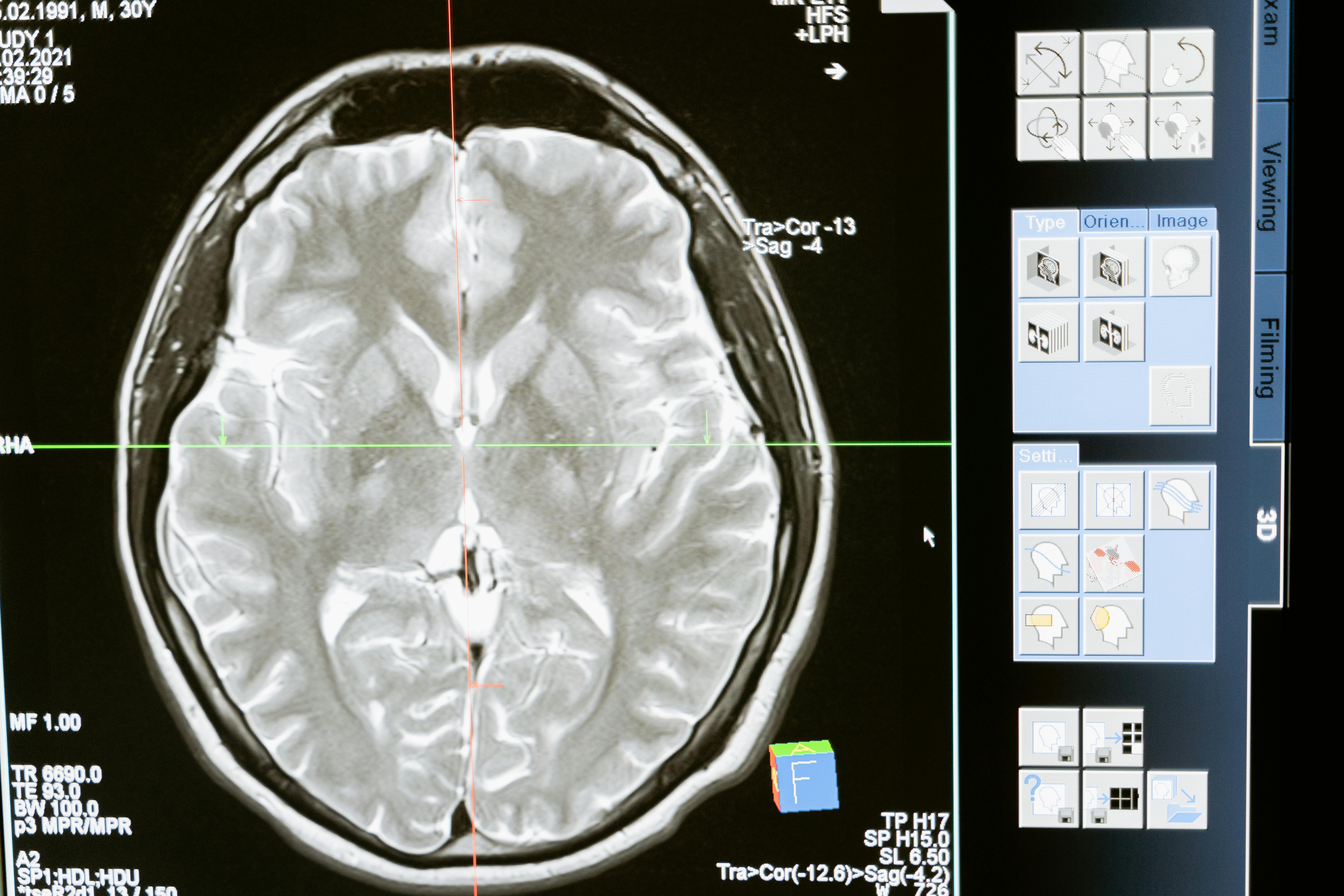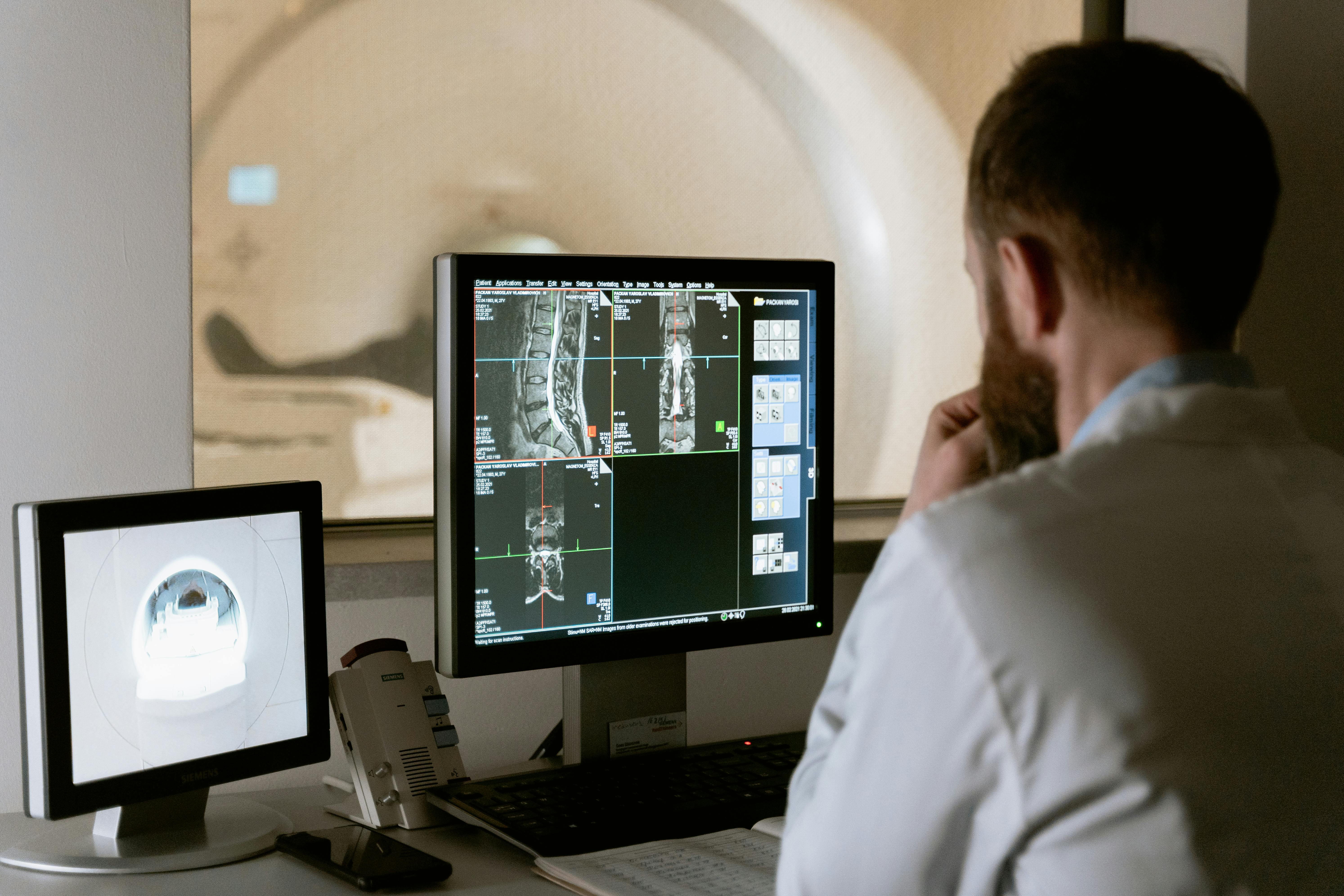
Decoding the World of Testing: Unveiling the Benefits and Pros & Cons
In manufacturing industries, testing played a crucial role in ensuring product reliability. Traditional methods involved physical inspections and functional tests to identify defects or malfunctions. However, with the advent of modern technologies and computer-aided design (CAD), manufacturers started implementing simulation-based testing. This approach enabled virtual prototypes to be analyzed extensively, minimizing costly physical prototyping and accelerating product development.
In the software industry, the evolution of testing has been incredibly transformative. Initially, manual testing dominated the scene, where testers meticulously executed test cases, recording results manually. As software systems became more complex and larger in size, this approach proved ineffective at detecting all defects.
To address these challenges, automated testing emerged, allowing regression tests to be executed swiftly and efficiently. With automation tools like Selenium and TestComplete, testers could write scripts that simulated user actions. This greatly enhanced test coverage and reduced time-to-market for software releases.
In healthcare, testing is paramount to ensuring patient safety and effective treatments. The evolution in medical research has led to precise diagnostic procedures and personalized therapies with DNA sequencing techniques and targeted drugs. Testing processes have evolved accordingly to include gene sequencing validation tests, pharmacokinetic analysis, and clinical trials to ascertain drug efficacy and safety profiles.
The aviation industry has been at the forefront of adopting advanced testing techniques. Flight simulators simulate various challenging scenarios, evaluating aircraft responses under stress conditions without risking human lives. Non-destructive testing methods such as X-ray inspections ensure critical components meet quality standards by detecting potential flaws that could compromise flight safety.
Another sector witnessing significant changes due to testing advancements is banking and finance. With the rise in digital banking solutions and mobile apps, financial institutions have stringent requirements for security and functionality. Penetration testing, vulnerability assessments, and stress tests are performed regularly to mitigate potential risks and guarantee uninterrupted services for customers.
In the automobile industry, testing techniques have evolved significantly due to concerns regarding safety and environmental impacts. Crash tests ensure vehicle designs satisfy stringent safety regulations. Additionally, with the growing focus on reducing emissions, manufacturers conduct exhaustive engine tests to achieve compliance with environmental norms.
Overall, the evolution of testing across various industries highlights the continuous pursuit of quality improvement and accelerated innovation. From manual inspections to simulation-based approaches and automation tools, testing methodologies have advanced to meet the demands of complex systems. Industries have embraced comprehensive and specialized testing techniques to deliver reliable products and services while keeping pace with evolving customer needs and global trends.
 Exploring the Different Types of Testing: From Software to EducationWhen it comes to testing, there are various types that serve different purposes and industries. Two common domains where testing plays a vital role are in software development and education. Let's explore the different types within these areas:
Exploring the Different Types of Testing: From Software to EducationWhen it comes to testing, there are various types that serve different purposes and industries. Two common domains where testing plays a vital role are in software development and education. Let's explore the different types within these areas:1. Software testing: In the software development lifecycle, various testing techniques ensure quality deliverables before the final deployment. The following are some key types of software testing:
- Functional testing: Verifies if the system functions according to its requirements and specifications.
- Unit testing: Focuses on testing individual components or units of code to ensure they work as intended.
- Integration testing: Involves checking how various components or modules interact with each other when integrated.
- System testing: Evaluates the complete system, considering both functional and non-functional aspects in a real-world environment.
- Performance testing: Determines how well the system performs under specific conditions, like stress or load, to ensure it can handle expected user demands.
- Security testing: Identifies vulnerabilities and weaknesses in the system's security measures and validates its resilience against potential threats.
- Usability testing: Assesses the user-friendliness of the software by analyzing user interaction, UI design, and overall user experience.
2. Education testing: For assessing knowledge levels or evaluating academic abilities, different tests exist within educational systems:
- Standardized tests: Conducted on a broader scale (such as state or national level) following a standardized format to evaluate student performance uniformly.
- Achievement tests: Measure acquired knowledge or skills in specific subjects based on curriculum-defined material.
- Aptitude tests: Gauge a person's general aptitude or potential for learning specific subjects or skills.
- Diagnostic tests: Help identify areas of strengths and weaknesses to understand students' individual needs and provide appropriate intervention plans.
- Placement tests: Determine appropriate educational placements by assessing students' proficiency levels in specific subjects.
These various types of testing contribute significantly to improving software quality, guiding educational pathways, and ensuring objective evaluation outcomes.
Remember, testing approaches can differ based on the context, industry-specific requirements, and goals. The presented types are not exhaustive but provide a basis for understanding the diversity of testing practices in software development and education sectors.
 The Psychological Impacts of Testing on Students and ProfessionalsTaking tests has significant psychological impacts on both students and professionals. It is essential to understand these effects in order to foster effective learning and career development.
The Psychological Impacts of Testing on Students and ProfessionalsTaking tests has significant psychological impacts on both students and professionals. It is essential to understand these effects in order to foster effective learning and career development. For many students, the pressure associated with exams can result in heightened anxiety levels, known as test anxiety. This form of stress impairs concentration and hampers performance. Test anxiety symptoms include sweating, tense muscles, racing heartbeat, and negative self-talk. Fear of failure, concern about judgment or criticism, and lack of confidence can intensify such feelings.
Moreover, the concept of test anxiety extends beyond its immediate impact on academic performance. Chronic test anxiety might lead to a cycle of poor results, resulting in low self-esteem and reduced motivation with respect to academics or subsequent testing situations. Such experiences can have long-lasting repercussions on students' mental well-being and self-efficacy beliefs.
Additionally, the act of testing can influence self-perception and self-worth among individuals. Poor performance on a test might make students question their competence or intelligence. Alternatively, success could boost their confidence and reinforce positive beliefs about their abilities.
Similarly, professionals often face various forms of assessments throughout their careers, such as certifications or proficiency tests. These evaluations can similarly lead to high stress levels due to concerns about job security or professional reputation.
Test scores are generally used as a measure of knowledge or skills, but they may not always accurately reflect individuals' true capabilities. In some cases, test scores serve as the sole determinant for admission into educational institutions or job opportunities, potentially causing individuals to view themselves solely through the lens of these scores.
Moreover, professionals frequently engage in ongoing evaluations; consequences such as promotions or salary raises might hinge substantially on their test performance. This pressure can strain work-life balance and aggravate mental health issues if not managed appropriately.
Therefore, it is crucial for educators and employers to recognize these psychological impacts and implement strategies that both alleviate stress associated with testing while encouraging continuous personal development. Incorporating comprehensive well-being programs, stress management techniques, and alternative assessment methods can contribute towards creating a nurturing environment for professionals and students alike. By minimizing the negative effects of testing, individuals can optimize their potential for growth, achievement, and overall well-being.
 Unveiling the Benefits of Effective Testing MechanismsUnveiling the Benefits of Effective testing Mechanisms
Unveiling the Benefits of Effective Testing MechanismsUnveiling the Benefits of Effective testing MechanismsIn today's fast-paced technological era, proper testing mechanisms play a crucial role in ensuring the success of any product or service. Whether it's software development, manufacturing, or even service-oriented industries, implementing effective testing techniques is vital for delivering high-quality results and achieving customer satisfaction.
One of the key advantages of conducting thorough testing is that it helps identify and rectify errors and bugs early in the development process. By systematically evaluating each component or functionality, testing effectively exposes any flaws or inconsistencies that may hinder optimal performance or user experience. This preemptive action not only saves time and resources but also prevents these issues from multiplying and leading to more significant problems downstream.
Apart from error detection, testing provides valuable insights into the overall system behavior. It empowers developers, manufacturers, and businesses to understand product limitations, how users interact with their offerings, and areas where improvements can be made. By improving usability and performance based on this feedback loop embedded into testing processes, companies can stay ahead in the highly competitive market and attract larger user bases.
Furthermore, a well-implemented testing mechanism ensures robust security measures. As technologies continue to advance, cyber threats have become increasingly sophisticated. Conducting comprehensive security tests helps safeguard sensitive data, information systems, and prevent cyber threats from infiltrating an organization's infrastructure. Implementing these mechanisms adequately mitigates risks and instills confidence among users regarding data protection.
A fundamental advantage of efficient testing lies in its impact on reliability. A product or service that has been systematically tested is more likely to perform reliably under different conditions. By simulating various scenarios, testers churn out possible issues a user might encounter and ensure proper mitigation measures are integrated beforehand, subsequently enhancing the end-product's reliability.
In addition to enhanced reliability, efficient testing leads to improved brand reputation and customer loyalty. Products that consistently meet quality standards generate positive customer experiences that directly translate into customer satisfaction, trust, and recurrent usage. Satisfied customers are likely to recommend the product to others, leading to increased brand recognition and market penetration.
Furthermore, effective testing aids in reducing costs associated with development and obsolescence. Unsurfaced flaws can become expensive problems when discovered after release, requiring extensive rework, security patches, or even product recalls. By investing in robust testing mechanisms throughout the development lifecycle, organizations can effectively minimize such costs, maximize resources, and avoid reputational damage caused by defective products post-launch.
Ultimately, embracing effective testing mechanisms ensures successful and timely project delivery. By adhering to tested and proven methodologies for quality assessment such as unit testing, integration testing, system testing, and user acceptance testing – teams can validate each aspect of product development, ensuring a seamless delivery of the final offering.
In conclusion, efficient testing brings substantial benefits across industries by identifying flaws early on, improving system behavior and usability, enhancing security measures, increasing reliability and brand reputation, reducing costs, and availing a successful product release. Incorporating effective testing mechanisms into development processes is a strategic choice that strengthens overall quality management systems and has the potential to propel businesses towards excellence in an increasingly competitive environment.
 The Drawbacks of Over-reliance on Testing: A Critical AnalysisOver-reliance on testing has become a prominent issue in various educational systems worldwide. While testing has its merits in assessing knowledge and skills, an excessive dependency on it can lead to several drawbacks detrimental to effective learning. In this critical analysis, we will delve into some of the prominent drawbacks that arise from over-reliance on testing.
The Drawbacks of Over-reliance on Testing: A Critical AnalysisOver-reliance on testing has become a prominent issue in various educational systems worldwide. While testing has its merits in assessing knowledge and skills, an excessive dependency on it can lead to several drawbacks detrimental to effective learning. In this critical analysis, we will delve into some of the prominent drawbacks that arise from over-reliance on testing.1. Narrow focus on memorization: One of the biggest pitfalls of excessive testing is the emphasis it places on rote memorization rather than a deeper understanding of subjects. Students may resort to memorizing information solely to perform well on tests, disregarding the importance of critical thinking and problem-solving skills. This reliance on memorization limits their ability to connect concepts, think creatively, and apply knowledge in real-world scenarios.
2. Limited assessment scope: Conducting evaluations mainly through tests restricts educators' ability to comprehensively assess students' abilities. Testing often focuses on specific content areas, neglecting other important dimensions like social skills, emotional intelligence, creativity, and practical application of knowledge. Neglecting these key elements can lead to an incomplete picture of a student's overall development.
3. Increased stress and anxiety: Overemphasis on testing can have severe repercussions on students' mental health due to heightened stress and anxiety levels. Frequent tests with high stakes put excessive pressure on students to consistently achieve top scores. This pressure can lead to feelings of inadequacy, diminished self-esteem, burnout, and even physical health issues. Consequently, an over-testing culture may hinder students' emotional well-being and compromise their potential for success.
4. Missed opportunities for active learning: Over-reliance on tests often results in a more passive learning experience for students. Extensive test preparation and exclusive focus on exam content detract from engaging in other valuable activities such as group discussions, collaborative projects, hands-on experiments, or fieldwork. Learning becomes centered around simply meeting test requirements rather than fostering deeper understanding and the development of critical skills.
5. Negative impact on creativity: A high-stakes testing environment tends to prioritize conformity and conformity limits creative thinking and innovation. When students are repeatedly rewarded for reproducing pre-established correct answers, they may become hesitant to explore alternative solutions or think outside the box. Over time, this limitation inhibits creativity and stifles student's ability to become independent thinkers and problem solvers.
6. Labeling and tracking biases: Relying heavily on a single assessment method can lead to inaccurate labeling and issuance of educational tracks. Students' capabilities might be wrongly judged based on a single test score, which fails to consider their true potential or individual circumstances. Such labeling can result in self-fulfilling prophecies, causing students to settle into expectations that may hold them back from reaching their full potential.
7. Inclusivity and cultural biases: Testing often introduces biases by favoring certain types of intelligence or placing individuals from diverse backgrounds at a disadvantage. Cultural differences, language barriers, and varying exam formats can disproportionately affect certain groups of students, leading to unfair outcomes. This bias runs counter to inclusive education, as it fails to acknowledge diverse strengths beyond the confinements of standardized testing.
Overall, while testing remains a critical component of education systems, over-reliance on testing presents noteworthy drawbacks that hinder holistic development, diminish creativity, exacerbate stress levels, perpetuate biases, and limit the opportunities for an engaging learning experience. Finding a balanced approach that integrates varied assessment methods while addressing these challenges can lead us towards more effective and equitable educational practices.
 Debunking Common Myths About Testing and AssessmentDebunking Common Myths About testing and Assessment
Debunking Common Myths About Testing and AssessmentDebunking Common Myths About testing and AssessmentTesting and assessment play essential roles in various aspects of life, from education and hiring processes to healthcare and personal development. However, many misconceptions and myths surround these practices, clouding their true purpose and effectiveness.
1. Tests measure only intelligence: One of the most prevalent misconceptions is that tests are solely designed to measure intelligence levels. In reality, assessments evaluate a diverse range of skills and abilities beyond just intellectual capacity. Tests can measure aptitude, problem-solving skills, critical thinking abilities, creativity, emotional intelligence, and many other qualities pertinent to specific domains.
2. Standardized tests are the ultimate measure: A widely held belief is that standardized tests provide an accurate representation of one's capabilities. While these tests can offer useful insights in certain contexts, they have limitations and cannot fully encompass an individual's complete set of skills and potential. Factors such as test anxiety, cultural bias, and individual circumstances can influence test performance, making it a narrow view of someone’s abilities.
3. There is only one type of test: Contrary to popular belief, testing and assessment comprise various approaches and formats beyond traditional paper-and-pencil exams. Performance-based assessments, portfolios, simulations, interviews, projects, and many more alternatives exist to cater to different learning styles and objectives. Recognizing that there is no one-size-fits-all assessment method ensures fairer evaluations.
4. Assessment stifles creativity: Some argue that relying on tests hampers creativity by placing excessive emphasis on memorization and recall rather than critical thinking or problem-solving abilities. However, effective assessments encourage analytical thinking, innovation, and creativity by involving higher-order cognitive skills like synthesis and evaluation instead of mere regurgitation of facts.
5. Assessments solely benefit educators or employers: Another common myth is that testing is purely beneficial for educators or employers seeking to make informed decisions about students or employees. Assessments indeed have immediate benefits for these stakeholders, but they also hold tremendous value for individuals themselves. Assessments can highlight strengths, guide personal growth, and offer valuable insights into areas that require improvement, fostering lifelong learning and self-development.
6. Test results are fixed and unchangeable: It is a misconception to believe that test results provide a permanent evaluation of one's capabilities. While the outcomes of assessments provide useful feedback, they represent the performance at a specific moment in time. Through targeted efforts, education, experiential learning, and personal growth, individuals can enhance their abilities by working on weaker areas or building upon existing strengths.
7. Tests hinder teaching or learning: Many argue that frequent testing hampers the teaching process or stifles motivation for students. However, assessments, when thoughtfully designed and integrated into the learning journey, can fuel engagement and drive learning forward. Well-constructed assessments serve as indicators of progress while providing feedback to both learners and teachers to guide and enhance the learning experience.
In conclusion, debunking common myths surrounding testing and assessment unveils their multifaceted nature and true potentials. Understanding that assessments encompass a broad range of approaches, measure various skills beyond intelligence, and benefit individuals as much as educators or employers enables us to utilize tests more effectively in educational, professional, and personal contexts towards individual growth and overall betterment.
 Comparative Study: Automated Versus Manual Testing MethodsComparative Study: Automated Versus Manual testing Methods
Comparative Study: Automated Versus Manual Testing MethodsComparative Study: Automated Versus Manual testing MethodsIn the world of software development and quality assurance, testing plays a crucial role in identifying bugs, ensuring functionality, and delivering a reliable product to end-users. Testing can be performed manually, where testers meticulously go through each feature and scenario, or automated, where specialized tools and scripts are employed for testing purposes. Both methods have their own advantages and disadvantages, making it essential to understand the differences and consider them when choosing the most suitable approach for a project.
Manual Testing:
Manual testing involves human interaction with the software or application under test. Testers follow test cases or explore the system to discover defects, faults, or usability issues. This method requires skilled testers with a good understanding of the system being tested. Here are some key points to consider about manual testing:
1. Flexibility: Manual testing offers flexibility as testers can adapt their approach based on feedback, user experience, or changing requirements.
2. Real-world simulations: Testers can replicate real-world user scenarios more effectively since manual testing allows them to analyze complex workflows and interactions.
3. Exploratory testing: Manual testers have the liberty to explore the software/application beyond predefined test cases, which enables them to uncover unforeseen defects.
4. User interface assessment: This method is efficient for evaluating and providing subjective feedback on the visual design, usability, and overall user experience.
Automated Testing:
Automated testing leverages specialized tools and scripts to execute pre-defined test cases, reducing human effort. Through automation, repetitive tasks can be performed more efficiently with precise consistency. Here are key points regarding automated testing:
1. Time-saving: Automated tests can be run repeatedly without any extra effort once properly designed. This significantly reduces regression testing time compared to manual repetition.
2. Scalability: When there are frequent releases or iterations of software, automation enables wider coverage of test cases across different platforms or configurations easily.
3. Complex scenarios: Automated testing is effective in complex scenarios that involve numerous data inputs and multiple test cases.
4. Accuracy and reliability: With automation, tests are executed consistently with no human errors, thus increasing reliability and providing accurate test results.
Comparison:
While both testing methods have their respective strengths, a comparison between automated and manual testing can help decide when to employ each method effectively. Here are some notable differences:
1. Skillset: Manual testing demands skilled testers with deep knowledge while automation requires expertise in programming and scripting.
2. Cost: While initial automation setup may be costly, it can yield long-term cost savings due to reduced resources required for regression testing.
3. Human intuition: Manual testing involves human judgment, intuition, and exploratory skills, which may be challenging to mimic with automation alone.
4. Maintenance effort: Automated tests may require continuous maintenance as software changes or new features are added while manual tests might need updating less frequently.
Conclusion:
Choosing between automated and manual testing depends on various factors including the project specifics, budget, timeline, and resource availability. A combined approach that combines both methods intelligently can be the most viable solution for many projects. Automation should ideally be used for repetitive tasks, regression testing, load testing, or where complex scenarios require scale, while manual testing continues to play a crucial role in uncovering exploratory defects and fine-tuning user experience. Ultimately, keen analysis of requirements and a deep understanding of the software/application can help make an informed decision about which method to rely on for efficient and reliable testing.
 How Effective Testing Can Lead to Better Product DevelopmentWhen it comes to product development, effective testing plays a crucial role in ensuring the creation of a superior end result. Through rigorous and well-planned testing approaches, various benefits can be achieved at different stages of the development process.
How Effective Testing Can Lead to Better Product DevelopmentWhen it comes to product development, effective testing plays a crucial role in ensuring the creation of a superior end result. Through rigorous and well-planned testing approaches, various benefits can be achieved at different stages of the development process.First and foremost, effective testing identifies any bugs or defects present in the product. Deploying thorough testing procedures allows developers to detect and rectify issues early on, preventing them from turning into major problems down the line. By addressing these flaws promptly, development teams eliminate the risk of launching a substandard product that could damage reputation or lead to dissatisfied customers.
Additionally, effective testing ensures product functionality by examining how well it meets its intended purpose. Comprehensive testing helps identify if all necessary features are working as expected, enabling developers to fine-tune their products accordingly. This process aids in enhancing user experience and user satisfaction when using the final product, ultimately leading to higher adoption rates.
Another important aspect of effective testing is ensuring compatibility across different platforms and devices. Testing products on various operating systems, browsers, and hardware configurations helps developers uncover any compatibility issues that may exist. Identifying and resolving such concerns ensures a wider reach for the product and seamless user experiences across different environments.
Incorporating effective testing practices drives improved reliability for products. By subjecting a product to rigorous tests that simulate real-world scenarios, developers gain valuable insights into its stability and resilience. Detecting and addressing vulnerabilities or system failures through testing helps enhance the reliability of the final product, subsequently establishing trust among users.
Moreover, effective testing contributes to faster development cycles. By identifying and resolving defects early on in the development process, iterations can be carried out swiftly, letting teams make iterative improvements consistently. This accelerated feedback loop ultimately results in reduced time-to-market while still delivering high-quality products.
Finally, implementing effective testing facilitates continuous improvement. Feedback obtained during testing enables developers to review and refine their approaches regularly. This not only benefits the specific product being developed but also provides valuable insights and insights that can be applied to future projects, fostering an environment of growth and progress within the development team.
To summarize, effective testing directly influences reliable and successful product development. It allows developers to identify and rectify flaws, enhance functionality, ensure compatibility, improve reliability, expedite development cycles, and foster continuous improvement. By embracing effective testing practices, development teams can produce superior products that meet user expectations, uphold quality standards, and achieve long-term success.
 The Role of Beta Testing in Software Development: A Closer LookBeta testing is a crucial phase in software development that plays a significant role in ensuring the quality and usability of a product before it reaches the market. This testing phase takes place after the completion of alpha testing, which involves in-house testing by developers, and typically involves a limited group of external users or real-world testers.
The Role of Beta Testing in Software Development: A Closer LookBeta testing is a crucial phase in software development that plays a significant role in ensuring the quality and usability of a product before it reaches the market. This testing phase takes place after the completion of alpha testing, which involves in-house testing by developers, and typically involves a limited group of external users or real-world testers.The primary objective of beta testing is to collect valuable feedback from end-users by having them test the software in their natural environment, mimicking real-world conditions. By doing so, developers can identify potential bugs, glitches, or performance issues that were not detected during alpha testing.
Beta testing differs from alpha testing as it involves a wider pool of testers who are representative of the intended user base. These testers can be a mix of existing customers, potential clients, or volunteers who show an interest in trying out the software. The diversity of user profiles provides developers with broader perspectives and increases the chances of identifying diverse software usage scenarios.
While alpha testing focuses on stability and basic functionality, beta testing focuses on validating user experience, functionalities, compatibility, and overall product quality. Beta testers often have access to pre-release versions of the software or early access to specific features to evaluate their usefulness and ease-of-use.
During beta testing, developers also pay close attention to user feedback regarding user interfaces (UI), user experience (UX), feature suggestions, and any user interface issues that may be confusing or difficult for users to navigate. These insights help developers make necessary enhancements and modifications to improve the overall usability and effectiveness of the software.
Beta testing also aids in gathering insights about any compatibility issues with different hardware configurations, operating systems, or third-party software integration. This knowledge allows developers to address these compatibility issues before full-scale release, ensuring a smoother experience for end-users right from day one.
Another aspect of beta testing is performance evaluation. Testers are encouraged to push the software to its limits by simulating heavy loads or executing complex operations to identify potential performance bottlenecks. Understanding these limitations in terms of system resources, response time, or scalability assists developers in optimizing their code and infrastructure to ensure optimum performance.
Furthermore, beta testing serves as a valuable marketing tool as it generates awareness about the software among potential customers. The involvement of beta testers fosters a sense of ownership and loyalty towards the product, creating a community that promotes the software through word-of-mouth recommendations.
In conclusion, beta testing represents an essential phase in software development that ensures high-quality releases by actively involving end-users or external testers. By incorporating user feedback, improving usability, identifying compatibility issues, and optimally addressing performance constraints, developers are better-equipped to deliver an effective and user-friendly product that meets or exceeds customer expectations.
 Addressing the Bias in Standardized Testing Across Cultures and Socioeconomic BackgroundsAddressing the Bias in Standardized testing Across Cultures and Socioeconomic Backgrounds
Addressing the Bias in Standardized Testing Across Cultures and Socioeconomic BackgroundsAddressing the Bias in Standardized testing Across Cultures and Socioeconomic BackgroundsStandardized testing is widely used as an evaluation tool across various educational systems worldwide. However, it is crucial to recognize and address the bias present in these tests, particularly regarding different cultures and socioeconomic backgrounds. The impact of bias can significantly influence test results and can perpetuate inequities in education.
1. Definition of Bias:
Bias refers to the systematic favoritism or disadvantage imposed on a certain group of individuals or cultures within standardized tests. Unchecked bias can result in unfair evaluation, limiting opportunities for particular students based on their cultural or socio-economic backgrounds.
2. Socioeconomic Background:
Standardized tests may inadvertently favor students from privileged socio-economic backgrounds, resulting in lower scores for individuals from disadvantaged groups. Factors such as access to quality resources, tutoring, and educational support systems outside of school can affect performance on these tests, leading to unequal outcomes.
3. Cultural Bias:
Standardized tests might include questions that reflect predominantly Western cultural experiences and values, unintentionally disadvantaging students from different cultural backgrounds. Questions related to literature, history, or social references are often skewed towards perspectives familiar to Western societies.
4. Language and Linguistic Bias:
Language plays a crucial role in standardized testing, but bias can occur through unfamiliar vocabulary or complex grammatical structures. Non-native speakers or individuals from non-English speaking countries may face challenges comprehending questions accurately. This disparity unfairly disadvantages marginalized communities where English might not be the primary language.
5. Stereotype Threat:
Stereotype threat refers to the stress experienced by individuals who feel at risk of confirming negative stereotypes associated with their identity group (such as race, ethnicity, gender). Standardized tests can magnify stereotype threat if questions perpetuate negative stereotypes or assumptions about certain groups' abilities or intelligence, influencing the test-takers’ performance negatively.
6. Advancing Inclusion in Testing:
Promoting inclusivity within standardized testing calls for various measures:
- Test developers should carefully review test content to remove cultural and linguistic biases. Ensuring a more diverse range of experiences is represented can help create a more equitable assessment tool.
- Accessibility accommodations, such as extended time, translations, or text-to-speech software, should be provided to support students who face language barriers or other learning challenges.
- Educators and policymakers need to acknowledge the potential impact of stereotype threat and strive to provide an inclusive and supportive environment for students during testing. It is essential to foster a growth mindset and prevent biases from influencing students' perceived abilities.
7. Alternative Assessments:
Acknowledging the limitations of standardized tests, emphasizing alternative forms of evaluation, such as project-based assessments or portfolio reviews. These approaches allow students to showcase their skills, knowledge, and abilities while minimizing the effects of biases present in traditional tests.
In conclusion, addressing bias in standardized testing across cultures and socio-economic backgrounds is crucial for creating a fair and inclusive education system. By recognizing these biases and taking proactive steps to minimize their effects, we can work towards giving all students equal opportunities for success, irrespective of their cultural background or socioeconomic status.
 Pros & Cons of Formative vs. Summative Assessment Methods in EducationFormative Assessment Methods in Education:
Pros & Cons of Formative vs. Summative Assessment Methods in EducationFormative Assessment Methods in Education:Pros:
- Formative assessment provides ongoing feedback to students, allowing them to monitor their progress and identify areas for improvement.
- It promotes active learning as students are engaged in the process of receiving feedback, reflecting on their performance, and making adjustments accordingly.
- Teachers and instructors can use formative assessment to identify gaps in learning and adjust their instruction accordingly, enhancing the effectiveness of their teaching methods.
- It encourages self-reflection and metacognition skills, helping students develop a deeper understanding of their own learning processes.
- Formative assessment fosters a positive learning environment, as it focuses on growth and improvement rather than simply grades or outcomes.
Cons:
- As formative assessment relies heavily on ongoing feedback and communication, it can be time-consuming for both students and teachers.
- Some argue that frequent assessments might create unnecessary stress or pressure for students, affecting their overall well-being and enjoyment of the learning experience.
- It may be challenging for educators to provide personalized feedback and support consistently to each student in large class sizes or online learning environments.
- Since formative assessment is continuous, it may be perceived as less objective or standardized compared to summative assessments where learners are evaluated based on specific criteria or standards.
- The interpretation of formative assessments can vary, and differences in judgments among teachers may impact consistency in grading or student evaluation.
Summative Assessment Methods in Education:
Pros:
- Summative assessment provides a comprehensive evaluation of student learning at specific points or the end of a defined period (e.g., semester), helping measure overall achievement or mastery of concepts.
- It sets clear expectations and standards as students are assessed against predetermined criteria, allowing for more objectivity when evaluating performance.
- Summative assessments facilitate the comparison of student performance across schools, districts, or educational systems, aiding in identifying potential gaps in education quality.
- For students, summative assessments can serve as recognition of achievements, reinforcing the value of hard work and providing a sense of accomplishment.
- It helps inform decisions regarding progression to the next level, such as determining readiness for college or entry into specific programs.
Cons:
- Some argue that summative assessments emphasize final outcomes and may overlook individual student growth during the learning process.
- Due to the accumulation and pressure associated with these assessments, students may experience high levels of stress or a fear of failure, which can adversely affect their motivation or engagement in learning.
- Since summative assessments typically occur late in the learning cycle, there is limited opportunity for students to receive timely feedback or make corrective adjustments.
- It may narrow the curriculum focus, as teachers may prioritize teaching to the test instead of exploring innovative teaching approaches or including additional topics outside of assessment scope.
- Since summative assessments generally emphasize standardized testing, it may not fully capture a student's diverse skills, talents, or abilities that are not easily measurable through traditional assessment methods.
 Ethical Considerations in Psychological and Health TestingEthical considerations play a critical role in psychological and health testing, ensuring the fair and responsible treatment of individuals involved. Researchers, clinicians, and test developers need to uphold these ethical principles to protect the rights, privacy, and well-being of those participating in tests. Here are some key points to consider:
Ethical Considerations in Psychological and Health TestingEthical considerations play a critical role in psychological and health testing, ensuring the fair and responsible treatment of individuals involved. Researchers, clinicians, and test developers need to uphold these ethical principles to protect the rights, privacy, and well-being of those participating in tests. Here are some key points to consider:Informed Consent: A crucial element before conducting any test is obtaining informed consent from participants. They should receive clear and comprehensive information about the purpose, procedures, potential risks, benefits, and confidentiality of the test. Participants must be fully aware of what they're getting into before giving consent.
Confidentiality and Privacy: Testing necessitates strict confidentiality measures by keeping the personal data and results private. Participants' identifying information should be securely stored, with access limited to relevant parties only. Test data needs anonymizing when possible, ensuring that individuals cannot be personally identified through their data.
Competence and Training: Test administrators must possess the necessary competence, training, qualifications, and experience to conduct the assessments adequately. This minimizes errors, enhances the accuracy of results, and ensures participants are dealt with responsibly.
Test Standardization: Ethically sound testing mandates the use of standardized procedures to attain consistency and fairness across test administrations. This includes administering tests impartially and adhering to prescribed scoring criteria or guidelines.
Avoiding Bias: Researchers and practitioners should strive to make psychological tests culturally unbiased or culturally fair. Efforts must be directed towards developing inclusive tests sensitive to cultural considerations, language differences, and individual diversity. This ensures fairness in both test administration and interpretation.
Appropriate Use: Assessments should not be applied beyond their intended purpose or special population unless validated for such reasons. Overutilization can lead to inaccurate conclusions or misdiagnosis.
Beneficence: Professionals should prioritize the well-being of individuals involved in testing processes. They must endeavor to minimize any potential harm caused by physical or psychological distress associated with testing; this may involve providing breaks or support throughout the evaluation.
Safeguarding Vulnerable Populations: Special precautions must be in place when testing individuals unable to provide full informed consent, such as children, individuals with intellectual disabilities, or vulnerable communities. Extra care should be taken to ensure tests are appropriate, non-exploitative, and beneficial for these populations.
Ethical Oversight: Independent ethical review boards play a critical role in monitoring research designs, protocols, and adherence to ethical guidelines. Obtaining ethical approval demonstrates that ethical considerations were given due importance when planning and executing the testing process.
Continuous Evaluation: Regular evaluation of psychological and health tests helps identify areas for improvement and can strengthen ethical practices over time. Researchers and practitioners should stay up to date with scientific advancements and evolving ethical standards to ensure their assessments remain ethically sound.
By integrating these ethical considerations into psychological and health testing practices, we can promote responsible and reliable assessment processes that respect the rights, autonomy, and dignity of all individuals involved.
 The Future of Testing: Trends and Predictions in a Rapidly Changing WorldThe future of testing is an ever-evolving landscape, with rapid advancements and changes in technology, methodologies, and practices. As businesses increasingly rely on software applications to power their operations, the demand for effective and efficient testing becomes paramount.
The Future of Testing: Trends and Predictions in a Rapidly Changing WorldThe future of testing is an ever-evolving landscape, with rapid advancements and changes in technology, methodologies, and practices. As businesses increasingly rely on software applications to power their operations, the demand for effective and efficient testing becomes paramount.One significant trend in testing is the shift towards automation. Software test automation has gained momentum in recent years due to its ability to reduce manual effort, increase test efficiency, and provide faster feedback on application quality. Continuous integration and deployment tools have enabled even more seamless integration of automated tests into the development process.
Another emerging trend is the adoption of artificial intelligence (AI) and machine learning (ML) in testing. AI algorithms can analyze vast amounts of data to identify patterns, detect anomalies, and predict potential issues within complex systems. This capability allows for more accurate testing predictions, enhanced defect detection, and improved test coverage. ML models are being used to optimize test scripts by learning from historical code modifications and evolving system behaviors.
Additionally, the shifting nature of software development methodologies impacts testing practices. Agile and DevOps methodologies have revolutionized the way applications are developed and delivered. The need for frequent releases demands quick yet rigorous testing cycles that align with accelerated development lifecycles. Testing early and throughout the development process has become essential to prevent defects from propagating downstream.
With digital transformation taking center stage, new environments such as cloud computing, mobile platforms, Internet of Things (IoT), and virtual reality introduce unique challenges for testers. Ensuring compatibility across multiple platforms, operating systems, browsers, and device configurations require an adaptable test strategy. Comprehensive end-to-end testing across different interfaces and ecosystem components will become vital for a seamless user experience.
Security testing is another area experiencing growth as threats become more sophisticated. In an interconnected world, data breaches can result in severe consequences for businesses. Testers need to have a deep understanding of security risks and vulnerabilities to build robust mechanisms that protect sensitive information from external attacks.
Moreover, the future of testing includes stronger collaboration between testers, developers, and other stakeholders. Cultivating a shared responsibility for quality across teams fosters synergy and reduces bottlenecks. Testers, being an advocate for quality just as much as testers, play a crucial role in ensuring effective communication and support frameworks.
To keep up with these trends, testers need to enhance their skills continuously. While core-testing principles will remain pertinent, staying up-to-date with automation tools, AI and ML techniques, and evolving development approaches is essential. Combined with a solid foundation in exploratory testing and problem-solving abilities, testers can navigate through this rapidly changing world successfully.
In conclusion, the future of testing holds immense potential with automation, AI/ML integration, evolving methodologies, diverse technological landscapes, security challenges, and enhanced collaboration. Effectively adapting to new trends while staying grounded in fundamental testing practices will be key to delivering high-quality software in our rapidly transforming digital world.
 Implementing Continuous Testing in Agile Development: Challenges and StrategiesImplementing Continuous testing in Agile Development: Challenges and Strategies
Implementing Continuous Testing in Agile Development: Challenges and StrategiesImplementing Continuous testing in Agile Development: Challenges and StrategiesWhen it comes to implementing continuous testing in an agile development environment, there are several challenges that teams may face. However, with the right strategies in place, these challenges can be overcome to facilitate efficient and effective software development.
One of the primary challenges in adopting continuous testing is ensuring that the testing processes align with the fast-paced nature of agile development. Traditional testing methods often involve lengthy test cycles, which can slow down the overall development process. To combat this challenge, agile teams must streamline their testing efforts by adopting automated testing tools and techniques. Automation aids in running tests swiftly and facilitates integration of frequent code changes.
Another challenge lies in establishing a comprehensive set of tests that cover all critical aspects of the software product. Within an agile development setting, where requirements and priorities may evolve quickly, creating and maintaining an exhaustive test suite becomes challenging. Agile teams must prioritize the creation of essential test cases aligned with major features or functionality. It is crucial to test frequently and ensure adequate coverage while being realistic about available resources.
Ensuring proper collaboration between developers and testers is vital in achieving continuous testing goals. Agile development emphasizes close collaboration among cross-functional team members, including developers and testers. Teams should integrate their workflows to ensure that developers consider testing aspects while writing code. By fostering open communication channels, both roles can align their efforts seamlessly and minimize rework.
Test environments pose an additional challenge as providing an accurate representation similar to production environments becomes key for effective testing. Discrepancies between various environments may lead to overlooked bugs or unstable releases. Agile teams must therefore focus on setting up stable test environments that closely mirror production systems.
Moreover, continuously enhancing test automation capabilities is essential to maintaining efficiency in continuous testing within agile development. The continuous integration/continuous delivery (CI/CD) pipeline must be thoroughly established to enable steady execution of tests at each stage, ensuring not only quality but also faster deployment.
The implementation of continuous testing also requires adequate documentation and reporting mechanisms to track test results, progress, and system behavior. Comprehensive reporting facilitates quick feedback loops, allowing teams to identify failures and prioritize improvements promptly.
To address these challenges, adopting effective strategies is necessary. Some strategies include:
1. Adopting a test-driven development (TDD) approach: Writing tests before the code helps ensure that testing is continuously integrated into the development process.
2. Utilizing automation frameworks: Implementing a reliable automation framework streamlines the execution of tests and ensures consistent results.
3. Applying risk-based testing: Prioritizing tests based on risk assessments ensures optimum coverage, even with limited resources in an agile environment.
4. Implementing shift-left testing: Introducing testing activities earlier in the development lifecycle helps catch issues early on, reducing rework and boosting efficiency.
5. Educating team members: Providing training and adequate support for individuals involved in testing and development ensure everyone understands the importance of continuous testing and its significance in agile delivery.
In conclusion, implementing continuous testing within an agile development framework comes with its set of challenges, but with careful consideration and strategic approaches, teams can enhance their testing capabilities. By synchronizing testing efforts with development cycles, improving automation capabilities, establishing collaborative structures, and prioritizing essential test cases, agile teams can overcome obstacles and drive efficient software delivery while ensuring quality at every step.
 Understanding Reliability and Validity in Test DesignUnderstanding Reliability and Validity in test Design
Understanding Reliability and Validity in Test DesignUnderstanding Reliability and Validity in test DesignReliability and validity are two crucial concepts in test design that play a significant role in ensuring that the assessment instrument produces accurate and trustworthy results. Here is everything you need to know about understanding reliability and validity in test design.
Reliability:
Reliability refers to the consistency of test scores or measurements. In other words, it determines whether the test instrument provides consistent results when administered to the same group of individuals under similar conditions. Higher reliability indicates higher consistency.
1. Test-Retest Reliability: This form of reliability assesses consistency by administering the same test to the same individuals at two different points in time. If their scores remain relatively similar, the test can be deemed reliable.
2. Parallel Forms Reliability: Parallel forms reliability involves administering two comparable versions of a test to the same group of individuals at different times. The correlation between the scores obtained from both versions indicates if they are consistent.
3. Internal Consistency Reliability: This reliability method explores the extent of agreement among different items within the same test. Measures like Cronbach's alpha analyze whether the items within a test measure a common construct.
Validity:
Validity refers to whether a test actually measures what it intends to measure, providing evidence and support for the interpretations and decisions made based on those results.
1. Content Validity: Content validity ensures that the questions or tasks included in a test are representative of relevant topics, skills, or knowledge within the domain being assessed. Expert judgment is often used to assess content validity.
2. Criterion-Related Validity: Criterion-related validity establishes how well a particular test correlates with established criteria (or measures) through predictive or concurrent methods. It determines if a test can accurately predict performance or comparably measure an individual's ability by considering external criterion measures.
3. Construct Validity: This form of validity examines whether a test effectively measures an underlying theoretical construct or trait. Ideally, construct validity is assessed by various methods - including convergent validity (degree of correlation with similar constructs) and discriminant validity (degree of differentiation from unrelated constructs).
The Importance of Reliability and Validity in Test Design:
Ensuring that a test has both reliability and validity is crucial for obtaining meaningful and trustworthy results. High reliability allows for confidence that the results obtained are consistent and are not solely due to random errors or fluctuations. Validity guarantees that the test measures accurately what it claims to assess, preventing misleading interpretations or misguidance.
By incorporating reliable and valid tests in educational, psychological, employment, or research settings, decision makers can confidently utilize the outcomes to make informed choices. Additionally, it minimizes bias and safeguards against making incorrect conclusions based on faulty or misleading assessments.
In conclusion, understanding reliability and validity serves as the foundation for creating effective tests that generate dependable and accurate results. These concepts play a vital role in developing assessment tools that assist in evaluating individual performance, learning progress, selecting candidates for job positions, extracting meaningful research findings, and much more.

